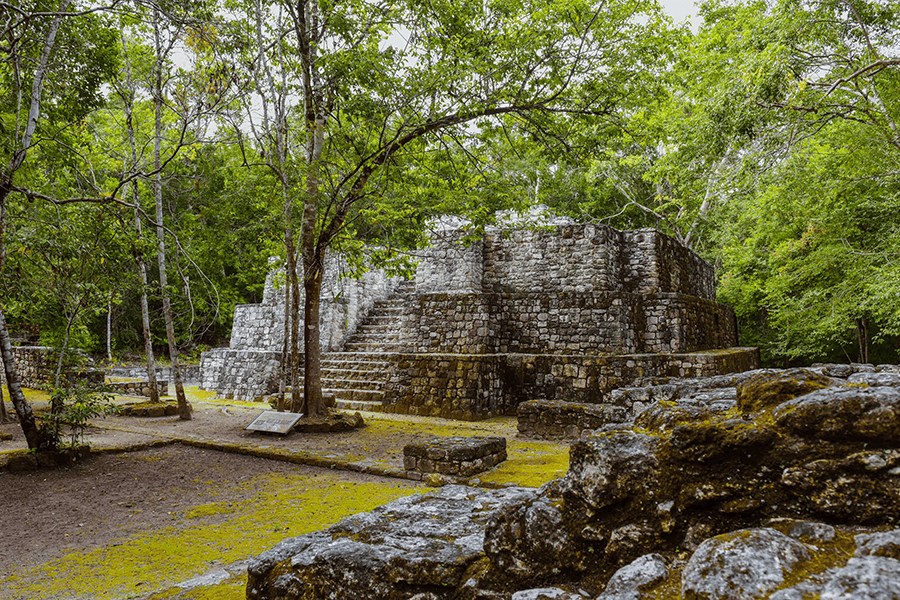A specialist in mobility suggests performing a specific exercise to help relax your hips, hamstrings, and lower back.

Importance of Hip and Lower Back Health
Maintaining hip and lower back health is crucial not just for mobility, but also for overall well-being. These areas serve as the foundation of our body’s movement, influencing everything from daily activities to athletic performance. By ensuring that your hips and lower back are flexible and strong, you foster better posture, which can reduce strain on surrounding muscles and joints. This interconnectedness means that an issue in one area can lead to discomfort or dysfunction in another.
Moreover, healthy hips and a strong lower back play a vital role in injury prevention. Many common ailments—such as sciatica or muscle strains—can stem from imbalances or tightness in these regions. Engaging in targeted exercises to enhance flexibility and strength not only alleviates pain but also promotes resilience against future injuries. Understanding the significance of these anatomical zones encourages individuals to incorporate mindful practices into their routines, prioritizing both care and proactive measures for long-term health benefits.
Understanding Mobility and Its Benefits
Mobility is more than just a buzzword in the fitness community; it represents a crucial aspect of overall well-being that often gets overshadowed by strength and endurance training. Think of mobility as the engine for all physical activity—without it, even the strongest muscles can falter under stress or injury. Enhancing your mobility allows for greater joint range of motion and fluid movement, which not only helps to prevent injuries but also improves efficiency during everyday tasks. By prioritizing mobility through targeted exercises, you can foster an environment where your body feels more aligned and capable.
The benefits of improved mobility extend beyond mere physical performance; they influence mental clarity and emotional resilience as well. Engaging in regular stretching or mobility routines releases built-up tension from daily stressors, translating into enhanced focus and relaxation throughout one’s day. Additionally, investing time in flexibility can renew passion for activities that might have felt out of reach due to discomfort or tightness. Ultimately, committing to a comprehensive mobility practice is like granting your body the freedom to explore its full potential—a journey towards vitality that promises both immediate relief and long-term benefits.
Common Issues with Tight Hips and Hamstrings
Tight hips and hamstrings are common culprits behind discomfort and restricted movement, impacting everything from athletic performance to daily activities. Many people find themselves sitting for prolonged periods, which can contribute significantly to this stiffness. The psoas major, a key muscle connecting the lower body to the trunk, often tightens under these conditions, leading to a ripple effect of tension that hinders your range of motion and can even exacerbate lower back pain.
Addressing these tight areas goes beyond just stretching; it’s about understanding the interconnectedness of your body’s muscle chains. A single tight hamstring might be compensating for weakness in other areas, such as the glutes or core muscles. This imbalance not only affects mobility but also increases vulnerability to injuries. By integrating targeted exercises focusing on holistic body alignment and strength-building moves into your routine, you can alleviate this tension effectively while fostering long-term flexibility and resilience in your musculature.
The Role of Exercise in Relaxation
Exercise transcends the mere act of moving our bodies; it serves as a powerful catalyst for relaxation and stress relief. The rhythmic motion of engaging in physical activity stimulates the release of endorphins, often dubbed feel-good hormones, merging enjoyment with a natural antidote to anxiety. When we focus on exercises that specifically target areas like the hips, hamstrings, and lower back, we not only improve flexibility but also allow ourselves to let go of accumulated tension from daily stresses.
Embracing targeted movements during relaxation routines can unlock deeper emotional benefits beyond physical comfort. For instance, stretching tight muscles in the lower body fosters mindfulness — an essential component in achieving a sense of tranquility. Engaging in this mindful practice enables individuals to become attuned to their bodies’ signals while cultivating a forgiving space away from external pressures. Consistently incorporating these exercises into your routine creates a holistic approach that nurtures both body and mind, transforming regular workouts into restorative rituals that promote lasting peace and rejuvenation.
Recommended Exercise for Relief
One powerful exercise that stands out for relieving tension in the hips, hamstrings, and lower back is the deep squat. When performed correctly, it not only engages these key muscle groups but also promotes a full range of motion, enhancing overall mobility. To maximize its benefits, consider incorporating variations such as the assisted squat with a chair or wall support if you’re just starting out; this can help you build strength and confidence while ensuring proper form.
Another effective option is the supine hamstring stretch using a strap or belt. This adaptable stretch allows you to gently elongate your hamstrings without straining your lower back. By lying on your back and utilizing the strap to pull one leg towards you while keeping the other leg straight on the ground, you’ll experience a calming release along both sides of your body—perfect after long hours of sitting or standing. As you incorporate these exercises into your routine, remember that consistency is key; regular practice can lead to profound improvements in flexibility and pain relief over time.
Step-by-Step Guide to Perform the Exercise
Start by finding a comfortable space where you can stretch without interruption. Begin in a standing position, with your feet hip-width apart. Gently roll your shoulders back and take a deep breath to center yourself. As you exhale, slowly hinge at your hips, allowing your upper body to fold forward towards the ground, bending slightly into your knees if necessary. This forward bend not only decompresses your lower back but also sets the stage for increased flexibility in the hamstrings and hips.
Once you’re in this position, hold for 15-30 seconds while consciously relaxing each muscle group. Visualize tension melting away with every exhale; this mental imagery can amplify physical relaxation. After holding the stretch, engage your core as you begin to rise slowly back up—verbalizing grounded or “supported” during this phase can reinforce stability within these regions of concern. Consider incorporating gentle oscillations at the peak of the stretch—small movements that mimic a swing—which invites deeper muscle engagement and promotes further release throughout those tight areas.
To deepen the sensation and enhance mobility benefits, repeat this sequence 2-3 times while varying arm placements—reaching overhead can intensify the stretch through lateral lines of tension in your body. Finally, conclude with a few mindful breaths seated on the floor or a cushion; allow yourself to luxuriate in any newfound ease within those areas. Engaging both mind and body fosters an integrated approach toward mobility that transcends mere physical practice and weaves serenity into everyday life.
Tips for Enhancing Your Stretching Routine
Incorporating mindfulness into your stretching routine can significantly enhance the effectiveness of each session. Rather than rushing through stretches, focus on your breathing and visualize the muscles you’re targeting. This mental engagement can heighten body awareness, allowing you to identify tight areas that may need extra attention. Consider using deep, rhythmic breaths to release tension; inhaling deeply while preparing for a stretch prepares both body and mind for deeper relaxation.
To further boost your stretching practice, vary your environment or timing occasionally. Take your routine outdoors or create an inviting atmosphere at home with soft lighting and calming music. Experimenting with different surfaces—like grass or a yoga mat—can provide unique sensory feedback and encourage a more connected experience with each stretch. Additionally, try integrating props like foam rollers or resistance bands to promote deeper muscle release during specific poses, enhancing flexibility and easing discomfort in hard-to-reach areas like hips and lower back. With these strategies, every stretching routine becomes an opportunity not just for physical improvement but also for personal growth and self-discovery.
When to Seek Professional Guidance
Recognizing when it’s time to seek professional guidance in your mobility journey can be transformative. If you find yourself struggling with persistent pain, stiffness, or discomfort during activities—despite regular stretching and exercises—it may be a sign that your body needs more targeted support. A specialist can offer personalized assessments, identifying underlying issues that self-guided efforts might overlook. They can integrate advanced techniques such as manual therapy or tailored movement patterns that specifically address your unique limitations.
Additionally, if emotional stress or anxiety around physical activity begins to arise, consulting with a professional can also provide valuable insights. Many people underestimate the psychological components of mobility; a holistic approach including breathing techniques and mindfulness exercises can facilitate profound improvements in how you move and feel. By proactively seeking help when needed, you empower yourself not just physically but mentally, allowing for greater resilience in overcoming the hurdles of tight hips and low back discomfort. Don’t wait until discomfort becomes debilitating—make the investment in your well-being today!
Conclusion: Embrace Mobility for Better Living
In a world that often champions speed and efficiency, the true essence of mobility may sometimes be overlooked. Embracing mobility not only enhances our physical capabilities but also enriches our mental well-being, allowing us to move freely through life without constraint. By engaging in targeted exercises, like those suggested by mobility specialists, we can break free from the tension that accumulates in our hips, hamstrings, and lower back, enabling us to reclaim a sense of ease and comfort in our day-to-day activities.
Moreover, nurturing our mobility is akin to investing in personal wellness—a key element for longevity and vibrancy. As we commit time to these restorative practices, we cultivate resilience that ripples out into all aspects of our lives; physically empowering us to tackle challenges with flexibility while mentally instilling a sense of calm amidst chaos. So take that first step today—breathe deeply into your stretches and feel the boundaries dissolve between discomfort and freedom. A more mobile life is not just a goal; it’s an invitation to experience each moment fully and joyfully.




